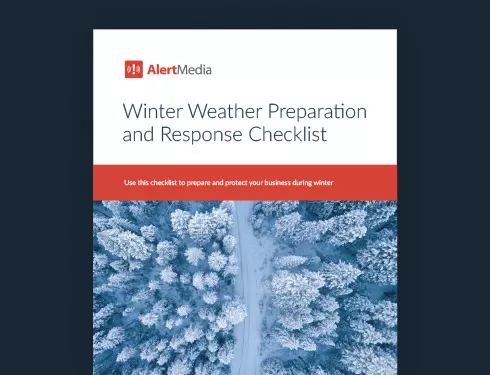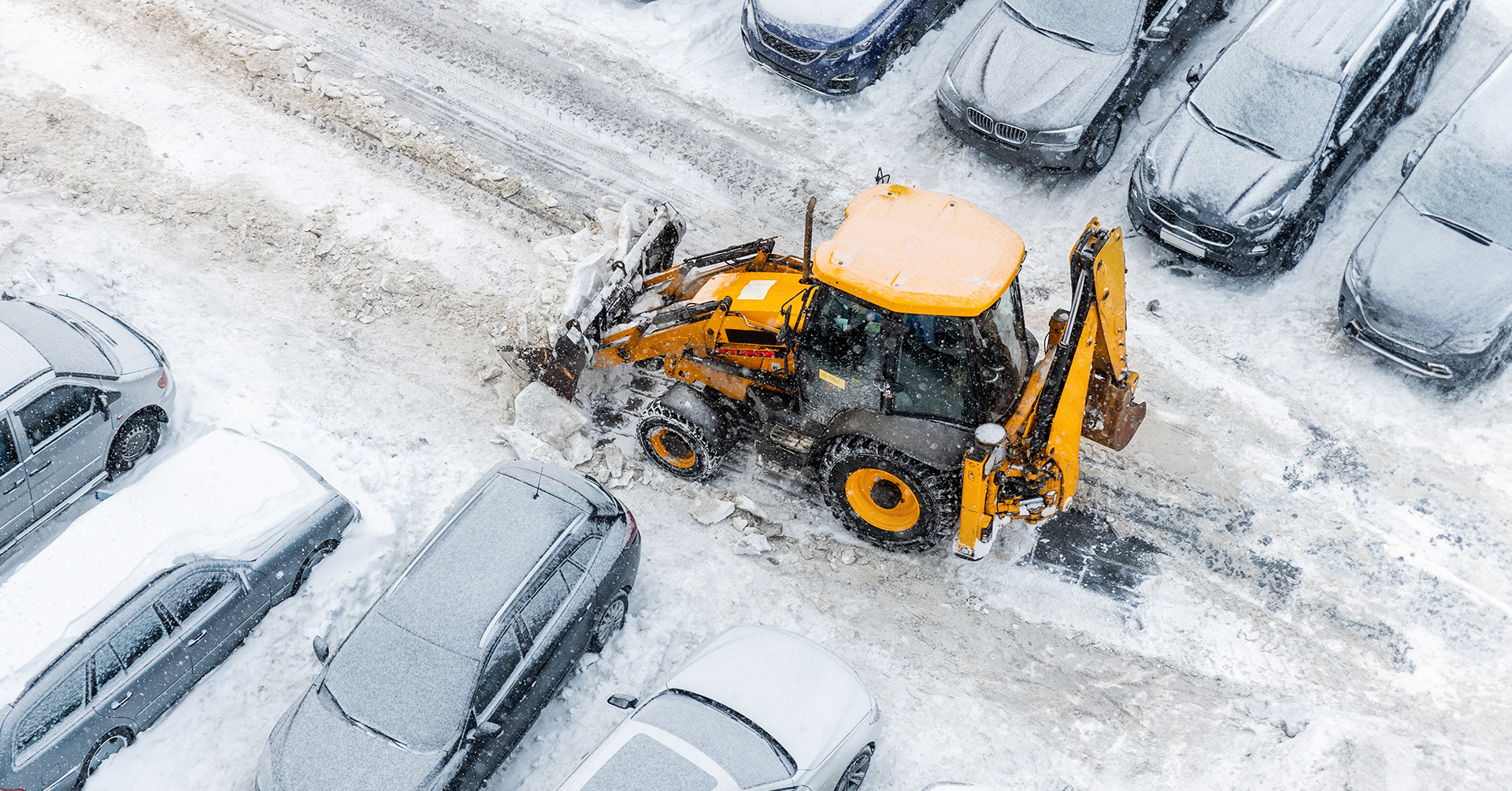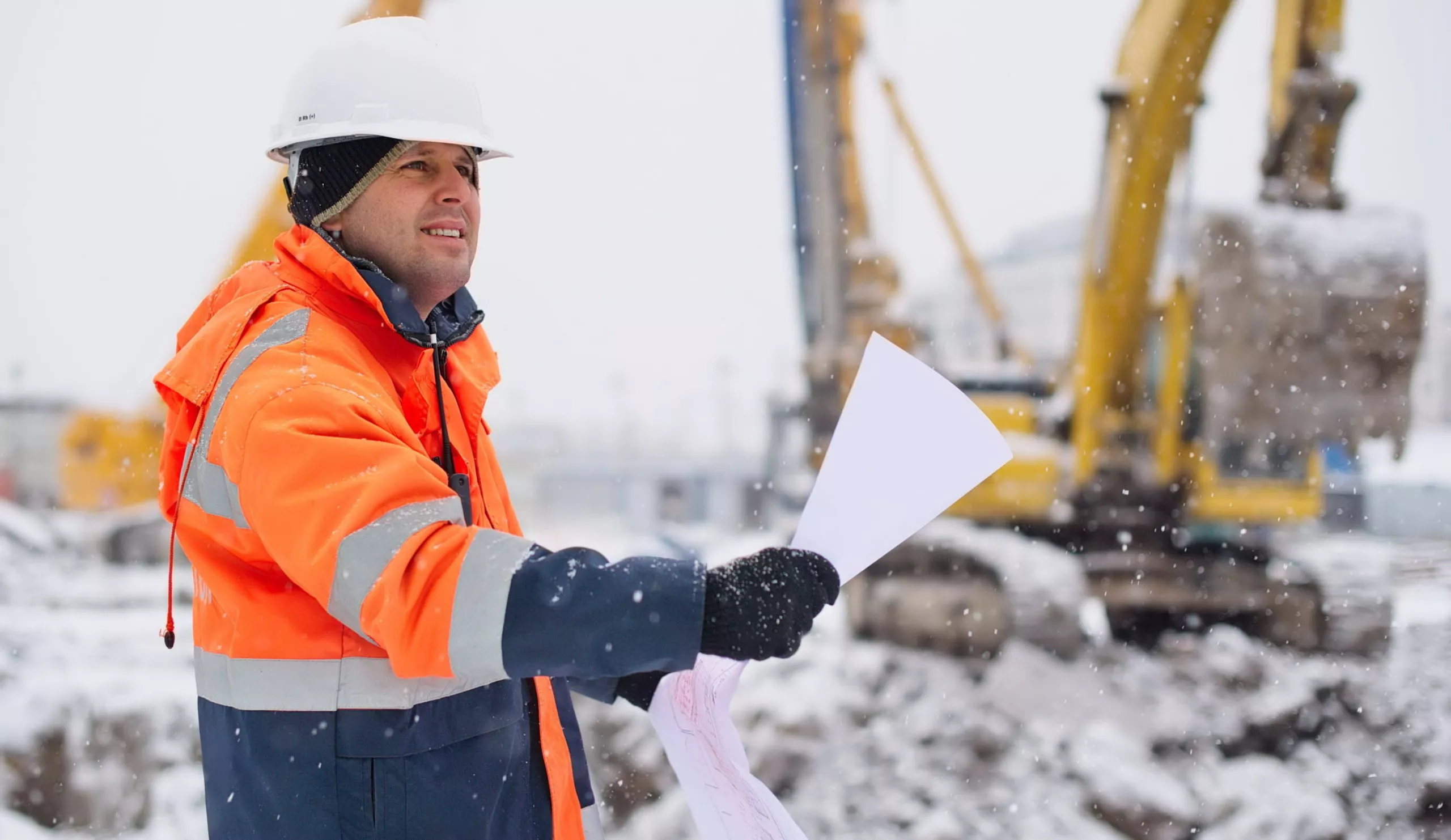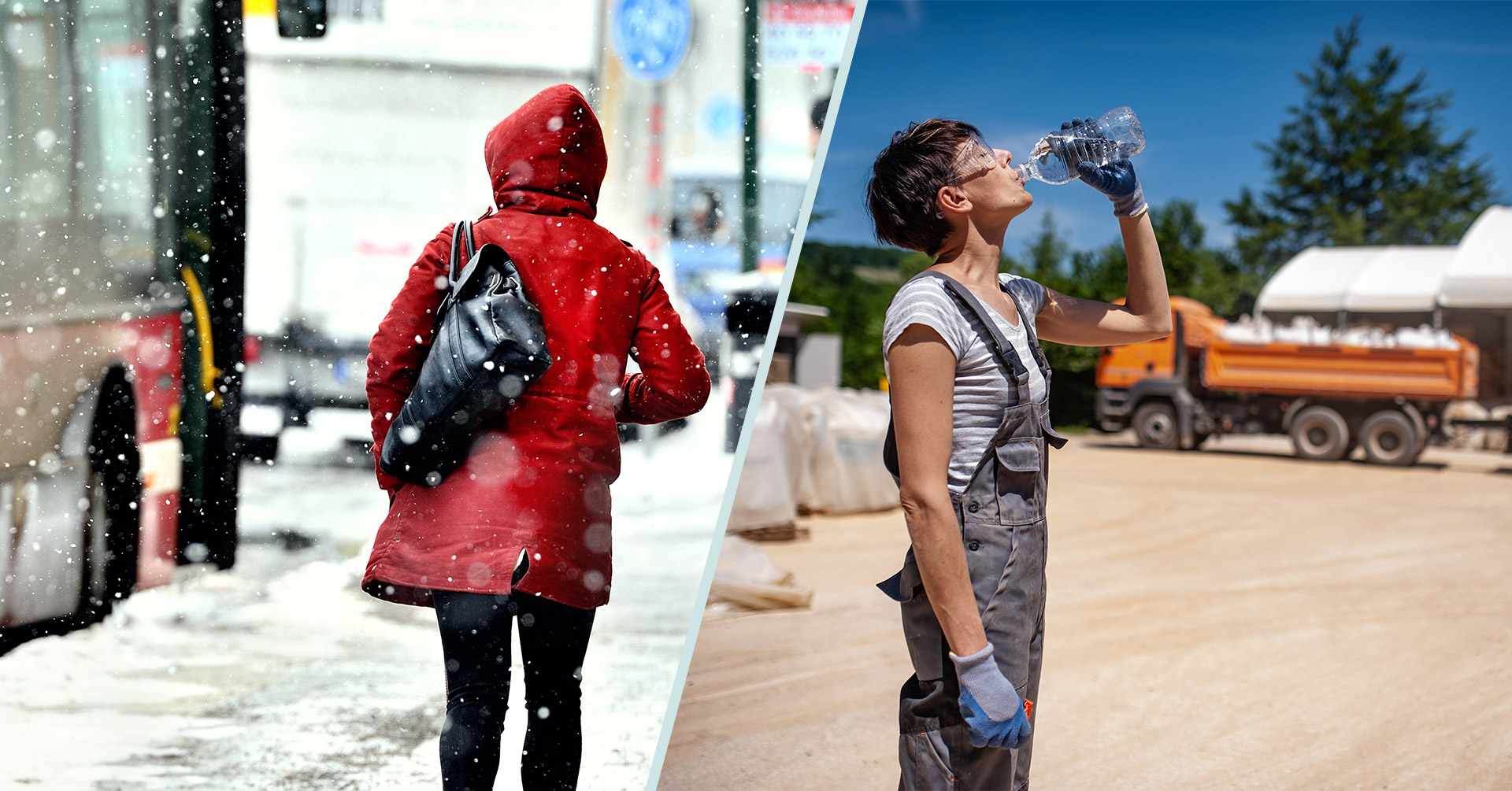
9 Winter Safety Tips & Topics for Employees (+ Prep Checklist)
The winter season and its extreme weather can present unique business challenges, but our nine tips will help you and your people prepare for safe and resilient operations.

For safety leaders, the cold, gloomy weather and icy precipitation bring unique challenges and risks to employees and business operations. For distributed workforces, there is an increased risk of mental health issues and a more complicated cybersecurity landscape.
Meanwhile, many more people are also commuting to work. Employers are in a position to help keep them safe en route, avoiding treacherous driving conditions, slick sidewalks, and icy gridlock—made worse when they arrive to find the office closed.
We’ll share steps you can take to ensure your workplace is safe from the hazards of winter weather. Whether your employees are working from home, in the office, or on the road, these winter safety tips for employees will prevent cold-weather hazards from catching you off-guard.
Download Our Winter Weather Checklist
Winter Threats to Employee Safety
When snow and ice strike, driving conditions can quickly deteriorate. According to the Federal Highway Administration, over 1,300 people are killed, and more than 116,800 are injured in vehicle crashes due to winter weather conditions each year. And it’s not just icy roads and snow accumulation that businesses need to worry about.
Many winter hazards affect businesses, even in areas that don’t experience snow. An increased likelihood of dangerous fire activity, slip and fall injuries, and the flu and other seasonal illnesses are just a few risks most businesses, regardless of location, face when winter arrives. Workplace-related illnesses like the flu cost employers billions annually in lost productivity even before the pandemic hit.
Most common cold-weather safety hazards
According to OSHA’s winter safety precautions, employees may be exposed to various weather-related hazards during winter, from dangerous driving conditions to the risks of shoveling snow and working outdoors in the elements.
While the specific hazards vary by location, industry, and the nature of your business activities, threats your people may face this winter can include:
- Unsafe winter driving conditions
- Road closures
- Slip and fall injuries
- Snow shoveling health risks
- Hypothermia and frostbite
- Flu, COVID-19, and other seasonal illnesses
- Flight delays and cancellations
- Local school delays and closures
- Structural stress and damage
- Fire activity
- Power outages
Winter safety topics
Here are 10 winter safety topics for meetings you can use to ensure a safe and smooth season:
- Snow removal and ice management
- Winter weather emergency plans
- Warm clothing and how to wear layers
- Vehicle and fleet maintenance
- Ice scraper use and wiper maintenance
- Snowblower safety
- Winter travel safety
- Slip, trip, and fall prevention indoors
- Safe use of space heaters
- Cold stress awareness and training
9 Winter Weather Safety Tips to Keep Employees Out of Harm’s Way
Fortunately, it’s not all gloom and doom once the snow and ice arrive. Since you can typically foresee the risks associated with winter weather, you can take steps to mitigate or eliminate the impact on your employees and your business.
Here are nine ways you can prevent cold-weather hazards from endangering employee safety and wreaking havoc on your business:
1. Use technology to monitor winter threats
From storm-related outages to local disease outbreaks, keeping a pulse on all potential threats that could impact your people or locations is vital. But trying to monitor road closures, fires, icy conditions, temperatures, and weather forecasts all at once is more than a full-time job. It gets more complicated when you have multiple office locations to account for, traveling employees, or a large remote workforce. It’s simply not feasible to manually track all the threats winter weather brings.
To address this problem, companies are turning to specialized threat intelligence solutions. These systems pull verified threat data from hundreds of sources worldwide to help you identify the most pertinent information without spending your time sifting through endless information. Some systems can also cross-reference your employees’ real-time locations so you can quickly ascertain who is threatened by specific events, whether people are on-site or on the road.
2. Safeguard mobile and outdoor employees

Employees who must travel or work outdoors are particularly vulnerable to weather conditions. You have a duty of care to properly train them on winter work safety precautions and provide them with appropriate equipment and tools. If you have personnel who must drive for their job, ensure they have proper tires and an emergency supply kit in their vehicles. For outdoor workers like construction workers, prepare to halt their duties in the event of severe weather. Some workers (like electrical repair crews) are even busier during lousy weather. When exposed to the elements, they face a heightened danger of cold-related illnesses, injuries, and accidents.
Give these employees a way to call for immediate help, such as a lone worker safety app. This will not only provide a safety net for employees who might encounter danger on the job or in the field but also give them peace of mind to know that their company is looking out for their safety.
Emergency communication software that supports location-based alerts is also a must-have for companies with workers on the go. With real-time location tracking and geofencing capabilities, you can instantly notify all employees within a specific geographical area. This capability ensures you send only relevant, targeted notifications and that your message gets to everyone who needs it.
3. Maintain a facility safe from winter hazards
Falls involving ice, sleet, or snow are some of the most significant risks people face during the winter months. In 2017 alone, there were more than 20,000 occupational injuries related to ice, sleet, and snow. And those are just the falls people reported! There are also carbon monoxide poisoning risks if your building has gas lines that break.
Winter preparedness is essential to protecting your people and business; you must take steps to prepare your facilities. You can’t prevent all falls, but you can salt the parking lot, sidewalks, and steps ahead of time. You can also place large, absorbent mats at every entrance to prevent slips once employees enter the building. Check off all your preparation tasks long before the forecast calls for snow with a winter preparedness checklist.
Specific steps you can take to improve winter workplace safety include:
- Inspecting your facilities (roof, plumbing, etc.)
- Host winter safety moments to maintain training
- Performing all required preventative maintenance and repairs
- Keeping walkways well-lit and clearly marked
- Ensuring you have a reliable contractor for snow removal
- Maintaining an adequate supply of de-icing products for walking surfaces
- Providing employees with slip-resistant footwear
- Installing carbon monoxide detectors to monitor for leaks
- Familiarizing yourself with OSHA winter safety tips and resources
4. Develop an emergency response plan for extreme winter weather
You can mitigate the impacts of cold and inclement weather to an extent; that’s why you need to create an emergency response plan in case conditions become extreme. An emergency response plan is a documented series of steps your organization will take during a critical event to ensure employees’ safety and minimize the impact on critical operations.
Suppose a winter storm in your area unexpectedly intensifies so people at your office cannot leave. In that case, your emergency response plan will cover what to do for the best safety outcomes. Here are the steps to create your winter weather emergency response plan.
- Perform a risk assessment: Before you know how to plan, you first need to know what to prepare for. A risk or threat assessment guides you in identifying the most likely and impactful threats your business and employees might face.
- Document contact info: Gather emergency contact information for every employee so you can keep in touch should anyone go unaccounted for or become injured during the emergency. Keep local EMS, fire department, and police numbers (emergency and non-emergency) on record, just in case.
- Assign roles and responsibilities: When an emergency occurs, employees look to their leaders for reassurance and guidance. These same leaders should be in charge of activating the emergency response plan, answering important questions, and giving orders.
- Consider available supplies and resources: In a cold weather emergency, you need a stock of supplies such as food and water, battery-powered radios, blankets, other cold-temperature gear, and first aid kits to treat cold stress injuries. Keep cold-weather emergency kits prepped and available.
- Create an evacuation plan: Because of certain situations, like being snowed in or unsafe roads, you might be unable to evacuate from a winter storm. But if possible, or once conditions lighten up, employees must know how to get to safety.
- Create paths of communication: When developing your plan, consider how to notify employees of a critical event, how the information will be delivered and received, and how effective communication channels will be at reaching every employee in harm’s way. An emergency notification system is perfect for this application.
- Create templates: Emergencies are incredibly stressful, and if you’re trying to manage one as you simultaneously draft messages to your employees, you’re likely to make mistakes. Instead, write message templates ahead of time and deploy them during an emergency so you can quickly and confidently communicate critical information in the heat of the moment.
(Pro tip: this process works for any potential emergencies, not just winter weather!)
The best time to plan for an emergency is during business-as-usual. Don’t wait to draw up your emergency response plan until a winter storm hits you! This free emergency response plan template can guide you through the process.
5. Communicate plans to employees
During severe winter storms, utility outages that knock out heat, power, and communication services can last hours and sometimes even days. Have a plan for how employees are expected to continue to work in the event of an outage, as well as how you will stay in touch with employees—and be sure everybody is clear on those plans ahead of time. Your people expect communication before, during, and after any significant storm. Don’t leave them hanging! Here are some of the things your employees are likely to wonder about in a winter emergency:
- Commute options
- Power outages or surge impacts
- Emergency contact information
- Delivery delays/statuses
- Modifications to work hours and/or shifts
- Access to updates
- Remote/telework options
With a multichannel emergency communication system, you can instantly send and receive messages across multiple channels simultaneously, including text messages, emails, cell phone calls, and others. No matter where your employees are or what device they are using, they need to receive timely information relevant to their safety and business activities. A system with two-way messaging capabilities also enables employees to share helpful on-the-ground information about an event as it’s taking place and request help if needed.
6. Review winter safety topics
Keep winter safety at the forefront of employees’ minds by regularly holding brief meetings to discuss bite-size topics. Before shifts, you could have safety talks to caution outdoor workers against cold-weather injuries and hazards. It could be a planned discussion before a snowstorm is predicted to hit so that you can remind employees of safe driving tips. Here are some other winter safety topic ideas:
- Frostbite prevention and care
- Safe use of space heaters
- Cold-weather equipment handling
- Seasonal affective disorder support
- Communication procedures for storm warnings and workplace closures
- How to recognize hypothermia
- How to maintain secure passwords
7. Encourage remote worker safety
With many employees now working remotely, it’s essential to consider the heightened risks employees may face in and around their homes when winter weather arrives. Shoveling snow, for instance, sends over 11,000 people in the U.S. to the emergency room every year due to injuries and cardiac emergencies like heart attacks.
And winter doesn’t just take a toll on employees’ physical health but also their mental health. Many are more sedentary than before the pandemic, directly impacting physical and mental well-being. Many employees—particularly remote workers—are also feeling the effects of isolation in the form of stress, anxiety, and depression. Roughly one-quarter of American adults report struggling with mental health in a given year. Many people already experience seasonal affective disorder (SAD) during winter, and mental health experts warn the lingering pandemic could amplify the symptoms of seasonal depression.
Conducting regular employee wellness checks is critical to ensuring your workers’ physical safety and mental well-being. Using the survey functionality of an emergency notification solution, organizations can easily, proactively, and confidentially conduct employee wellness checks to determine which employees need additional support and connect them to resources.
8. Prepare for seasonal travel risks
Winter is a typical time for increased travel, both for work to meet end-of-year goals and for personal trips around the holidays. However, the season also brings increased risk for travelers. Hazardous weather conditions, increased traffic on the roads and in airports, and infrastructure concerns such as poor road conditions from winter storms can delay or even halt travel, leaving employees stranded in strange cities with limited resources.
A travel safety app can help you monitor risks to your traveling employees so you both know what winter conditions might threaten an upcoming or current trip. It also offers a direct line of communication between you and your travelers so that you can stay on the same page about potential hazards, and your employees can reach out for support if needed.
9. Consider all possible hazards complicated by winter conditions
Bad winter weather isn’t the only issue companies and employees must face during the winter months. Consider what happens to your business when local schools are closed, an outbreak of flu affects employees and their families, or traveling employees are stranded in airports due to flight delays and cancellations. Meetings are postponed, emails are delayed, and normal business operations are disrupted. As employees’ attention is directed away from the organization and onto the pressing needs of the day, productivity is bound to take a hit.
Instead of sending individual messages for every minor update, you might consider using an event page as a hub for all related information and updates. With event pages, you can consolidate event-specific messages, Q&As, and resources on one page that employees can reference. Instead of sending a new notification with every update on a developing event, you can send out a single link to a webpage with all the latest updates. This keeps employees informed without risking notification fatigue.
Create the Shelter From the Storm
The most important thing you can do is let your employees know you have their best interests at heart. This means keeping them informed before, during, and after a weather event. The fortunate part about most winter weather storms is that they are predictable and, therefore, plannable. Do what you can now to prepare, and be sure you have a communication system to help you get the word out fast.
Every business faces changing risks as winter approaches. Being prepared for the many hazards of winter weather and extreme cold can help you better manage the impact of such incidents on your employees, customers, and bottom line. With proper preparation and effective communication, you can make these cold winter months more tolerable for you and your employees.




